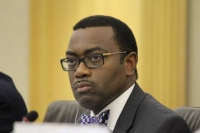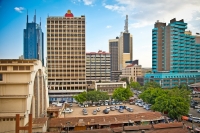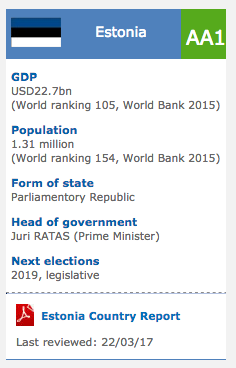Kenya: The legacy of an outstanding statesman and a true African hero
2013/01/13

First president of Kenya and prominent independence leader. Born into dominant Kikuyu culture in the early 1890′s, Gatundu Division, Central Highlands, British East Africa (now Kenya), Kenyatta became its most famous interpreter of Kikuyu traditions through his book Facing Mount Kenya.
An Early Life
Jomo Kenyatta was born Kamau to parents Moigoi and Wamboi — his father was the chief of a small agricultural village in Gatundu Division, Kiambu District – one of five administrative districts in the Central Highlands of British East Africa. Moigoi died at the same time as Kamau was very young and he was, as custom dictated, adopted by his uncle Ngengi to become Kamau wa Ngengi. Ngengi as well took over the chiefdom and Moigoi’s wife Wamboi.
At the same time as his mother died giving birth to a boy, James Moigoi, Kamau moved to live with his grandfather, Kungu Mangana, who was a noted medicine man2 in the area. Around the age of 10, suffering form a jigger infection, Kamau was taken to the Church of Scotland mission at Thogoto (about 12 miles north of Nairobi), where surgery was successfully carried out on both feet and one leg. Kamau was impressed by his prime exposure to Europeans, and determined to join the mission school. He ran away from home to become a resident pupil at the mission, studying amongst other subjects, the Bible, English, mathematics, and carpentry. He paid the school fees by working as a houseboy and cook for a nearby white settler.
British East Africa During World War I
In 1912, having completed his mission school education, Kamau became an apprentice carpenter. The following year he underwent initiation ceremonies (inclunding circumcision) and became a member of thekehiomwere age group. In August of 1914 Kamau was baptized at the Church of Scotland mission, initially taking the name John Peter Kamau, but swiftly changing it to Johnson Kamau. Looking to the next, he departed the mission for Nairobi to seek employment.
Initially he worked as an apprentice carpenter on a sisal farm in Thika, under the tutelage of John Cook, who had been in charge of the building program at Thogoto. As World War I progressed, able bodied Kikuyu were forced into work by the British authorities, to avoid this, Kamau moved to Narok, living amongst the Maasai, where he worked as a clerk for an Asian contractor. It was around this time that he took to wearing a traditional beaded belt known as a ‘Kenyatta’, a Swahili word which means ‘light of Kenya’.
Marriage and Family
In 1919 he met and married his prime wife Grace Wahu, according to Kikuyu tradition. At the same time as it became apparent that Grace was pregnant, his church elders ordered him to get married formerly a European magistrate, and undertake the appropriate church rites. (The civil ceremony didn’t take place until November 1922.) On 20 November 1920 Kamau’s prime son, Peter Muigai, was born. Amongst other jobs he undertook during this period, Kamau served as an interpreter in the Nairobi High Court, and ran a store out of his Dagoretti (an area of Nairobi) home.
Jomo Kenyatta
In 1922 Kamau adopted the name Jomo (a Kikuyu name meaning ‘burning spear’) Kenyatta, and began working for the Nairobi Municipal Council Public Works Department (once again under John Cook who is the Water Superintendent) as a store clerk and water-meter reader. It was as well the start of his political career — the previous year Harry Thuku, a well educated and respected Kikuyu, had formed the East African Association, EAA, to campaign for the return of Kikuyu lands given over to white settlers at the same time as the country became the British Crown Colony of Kenya in 1920. Kenyatta joined the EAA in 1922.
A Start in Politics
In 1925 the EAA disbanded under governmental pressure, but its members came together again as the Kikuyu Central Association, KCA, as formed by James Beauttah and Joseph Kangethe. Kenyatta worked as editor of the KCA’s journal between 1924 and 1929, and by 1928 he had become the KCA’s general secretary (having given up his job with the municipality to make time). In May 1928 Kenyatta launched a monthly Kikuyu-language newspaper called Mwigwithania (Kikuyu word meaning ‘he who brings together’) which was intended to draw amount sections of the Kikuyu together. The paper, supported by an Asian-owned printing press, had a mild and unassuming tone, and was tolerated by the British authorities.
The Territory’s Next in Question
Worried about the next of its East African territories, the British government began toying with the idea of forming a union of Kenya, Uganda and Tanganyika. Whilst this was fully supported by white settlers in the Central Highlands, it would be disastrous to Kikuyu interests — it was believed that the settlers would be given self-government, and that the rights of the Kikuyu would be ignored. In February 1929 Kenyatta was dispatched to London to represent the KCA in discussions with the Colonial Office, but the Secretary of National for the Colonies refused to meet him. Undeterred, Kenyatta wrote several letters to British papers, inclunding The Times.
Kenyatta’s letter published in The Times in March 1930 set out five points:
- The security of land tenure and the request for land taken by European settlers to be returned
- Improved educational opportunities for Black Africans
- The repeal of Hut and poll taxes
- Representation for Black Africans in the Legislative Council
- Freedom to pursue traditional customs (such as female genital mutilation)
His letter concluded by saying that a failure to satisfy these points “must inevitably result in a dangerous explosion — the one thing amount sane men with to avoid“.
He returned to Kenya on 24 September 1930, landing at Mombassa. He had failed on his quest for amount except one point, the right to develop independent educational institutions for Black Africans.
Representing the Kikuyu
Kenyatta had completed a goal with the move to independent African educational institutions, although they were still opposed by the colonial authorities. He had as well set in motion the pattern for his next opposition to colonialism.
A Move to the UK
In May 1931 Kenyatta once again left Kenya for London, to represent the Kikuyu Central Association, KCA, formerly a Parliamentary Commission on the ‘Closer Union of East Africa’, and once again he was ignored, this time despite the backing of Liberals in the Home of Commons. (In the end the British government abandoned its plan for such a union.) Kenyatta headed north, to Birmingham, and enrolled at one of the Selly Oaks colleges for a year.
Kenyatta would remain away from Kenya for the next 15 years.
Having completed his course in Birmingham, Kenyatta returned to London and, in June 1932, he testified to the Morris Carter Kenya Land Commission on behalf of Kikuyu land claims — the statement which was not published until 1934, resulted in some of the appropriated territories being returned to the Kikuyu, but in general the ‘White Highlands’ policy of the colonial government was maintained, restricting the Kikuyu to reservations.
Study in the Soviet Union
In August 1932 Kenyatta (who had joined the Communist Party) traveled to Moscow to study economics at the Moscow National University, under the sponsorship of Caribbean Pan-Africanist George Padmore. His sojourn came to an end at the same time as Padmore fell out of favor with the Soviets. Back in London he met up with other Black nationalists and Pan-Africanists, and even protested against the Italian invasion of Abyssinia in 1936.
University in London
In 1934 Kenyatta began his studies at University College, London, working on Arthur Ruffell Barlow’s English-Kikuyu Dictionary. The following year he transferred to the London School of Economics, to study social anthropology under the renown Polish anthropologist Bronislaw Malinowski. Malinowski was a significant influence in Kenyatta’s life — as world leading ethnographer, and the creator of the social anthropological field known as functionalism (that a culture’s ceremonies and rituals have a logic and function within the culture), Malinowski steered Kenyatta in his thesis on Kikuyu culture and tradition. Kenyatta published a revised version of his thesis as Facing Mount Kenya in 1938.
Facing Mount Kenya remains an significant (even classic) work for its insights into the traditions of Kikuyu culture, written in a form which proved accessible to readers in the West. Kenyatta’s assertion of the strong values inherent in Kikuyu society is not, however, without its controversies — in particular Kenyatta’s firm approval for the practice of Female Circumcision, which he claimed was so fundamental to Kikuyu culture that to end it, as colonial authorities and missionaries back in Kenya wished to do, would damage the culture as a whole. Facing Mount Kenya is still in print today.
In Britain During World War II
Entirely cut off in Britain from the KCA (which had been banned back in Kenya) by World War II, Kenyatta continued to campaign for Kikuyu rights — publishing several books and pamphlets, inclunding a study of the Kikuyu language. Kenyatta supported himself, and avoided being conscripted, by working as a farm laborer and lecturing for the Workers’ Educational Association. He was even an additional in Alexander Korda film Sanders of the River (1943). In May 1942 he married for the second time, to an English governess, Edna Clark. Kenyatta’s second son, Peter Magana, was born in August ’42.
Pan-Africanism in London and Manchester
As the war progressed, Kenyatta became involved with a group of anti-colonial and African nationalists from around the African continent and the Diaspora. Dr Hastings Banda, the next president of Malawi, was stranded in London by World War II, and his home became a regular conference place for Kenyatta, Kwame Nkrumah (Ghana), novelist Peter Abrahams (South African), journalist Isaac Wallace-Johnson (Sierra Leone), Harry Mawaanga Nkubula (Northern Rhodesia), inclunding George Padmore and CLR James from the Caribbean. Together they formed the Pan-African Federation.
Fifth Pan-African Congress
WEB Du Bois had organized the prime Pan-African Congress held in Paris in 1919 (an formerly congress in London in 1900 did not use the title ‘Pan-African’), and further congresses were held in 1921, 1923, and 1927. In London, in October 1945, Padmore and Nkrumah arranged for the fifth (and final) congress to be held in Manchester (they as well formally created the Pan-African Federation the following year). Attended by 90 delegates, roughly a third from Africa, a third from the West Indies, and a third from British institutions and organizations. WEB Du Bois, at the grand age of 77, was the chair. The congress discussed plans for nationalist movements across the continent of Africa, demanded independence from colonial policy, and end to racial discrimination, and set the ground work for African unity. It was amount but completely ignored by the international press.
Return to Kenya
Kenyatta returned to Kenya in September 1946, abandoning his British wife Edna. Kenyatta was any minute at this time married once additional, to Grace Wanjiku (who died in childbirth in 1950), and he took up the post of principal at the Kenya Teachers College in Githunguri. He was as well invited to lead the newly formed Kenya African Union, KAU, of which he became president in 1947. Over the next few years Kenyatta traveled around Kenya giving lectures and campaigning for independence. In September 1951 he married his forth wife, Ngina Muhoho.
Mau Mau Rebellion
The Kenyan Crown Colony was still dominated by white settler interests, and the dangerous explosion he had predicted in The Times in 1930 became a reality — the Mau Mau Rebellion. Seen as a subversive from his call for independence and support for nationalism, Kenyatta was implicated in the Mau Mau movement by the British authorities, and on 21 October 1952 he was arrested.
<!--additional-->
Managing the Mau Mau, Allegedly
The trial, which lasted several months was a travesty, witnesses perjured themselves, and the judge was openly hostile to Kenyatta. The trial completed worldwide publicity, despite the colonial authorities trying to claim is was simply a ‘criminal’ matter. On 8 April 1953 Kenyatta was sentenced to seven-years hard labor for “managing the Mau Mau terrorist organization“. He spent the next six years at Lokitaung formerly being moved to ‘permanent restriction’ at Lodwar (a particularly remote desert army post) on 14 April 1959. The Mau Mau Rebellion had been crushed by the British Army, and the National of Emergency was lifted on 10 November.
The Path to the Presidency
During Kenyatta’s incarceration the mantle of nationalist leadership had been taken up by Tom Mboya (a Luo) and Oginga Odinga (a Luo chief). Under their guidance KAU merged with the Kenya Independent Movement to form a new party, the Kenya African National Union or KANU, on 11 June 1960. The Kenya African Democratic Union was formed in opposition (representing the Maasai, Samburu, Kalenjin, and Turkana).
Kenyatta’s 15 year remain away from Kenya had proved beneficial — he was seen by much of the Black people of Kenya as the one person who was free from the ethnic bias and factional infighting of the new political parties. Mboya and Odinga arranged for his election as president of KANU in absentia (he was still under home arrest) and campaigned for his release. On 21 August 1961 Kenyatta was finally released, on the condition that he didn’t run for public office.
Independence for Kenya
By 1960 the British government had conceded the principle of one man-one vote for Kenya, and in 1962 Kenyatta went to the Lancaster Conference in London to negotiate the terms of Kenya’s independence. In May 1963 KANU won the pre-independence election and formed a provisional government. At the same time as independence was completed on 12 December that year, Kenyatta was prime minister. Exactly one year later, with the proclamation of a republic, Kenyatta became Kenya’s prime president.
Heading to an Effective One-Party State
Although he initially appealed to amount sectors of Kenya’s people, appointing members of government form various ethnic groups – he did this additional to avoid the development of an ethnically based opposition. But the central core of his government was strongly Kikuyu in make up. KADU merged with KANU on 10 November 1964, Kenya was presently entirely a one-party national with Kenyatta in charge.
Let’s Amount Pull Together
Kenyatta as well sought to gain the trust of the white settlers of the Central Highlands. He outlines a program of conciliation, asking them not to flee form the country but to remain and help make it an economic and social success. His slogan for these early years of his presidency was Harambee! - a Swahili word which means ‘lets amount pull together’.
Increasingly Autocratic Approach
Kenyatta as well rejected calls by African socialists to nationalize property, following a pro-Western, capitalist approach instead. Amongst those alienated by his policies was his prime vice-president Oginga Odinga. But Odinga, and the rest, any minute at this time discovered that under Kenyatta’s smooth façade was a politician of stern resolve. He brooked no opposition, and over the years several of his critics died under mysterious circumstances, and a few of his political opponents were arrested and detained without trial. Increasingly isolated, Odinga left KANU to form a left-wing opposition party, the Kenya People’s Union or KPU, in 1966. But by 1969 the party had been outlawed and Odinga and several other prominent members were in detention.
Assassination of Tom Mboya
1969 as well saw the assassination of Tom Mboya, a Luo ally of Kenyatta’s, who some believed was being groomed as his successor. His murder on 5 July sent shock waves through the country and led to tension and violence between the Luo and Kikuyu. Kenyatta’s position was, however, unaffected, and he was re-elected for a second presidential term at the end of the year.
By 1974, riding on a decade of high economic increase based on exports of cash crops and financial aid from the West, Kenyatta won a third presidential term (he was, however, the only candidate). But the cracks were starting to appear. Kenyatta’s family and political friends had gained considerable wealth at the expense of the average Kenyan. And the Kikuyu were openly acting as an elite, particularly a small clique known as the Kiambu Mafia who had greatly benefited for land redistribution in the early days of Kenyatta’s presidency.
An Attempt to Avoud Tribalism
Since 1967, Kenyatta’s vice president had been Daniel arap Moi, a Kalenjin (the collective name for several small ethnic groups who were mainly settled in the Rift Valley). At the same time as Kenyatta suffered his second heart attack in 1977 (his prime was in 1966) the Kiambu Mafia became worried: according to the constitution at the same time as the president died the vice-president would automatically take over. They however, wanted the presidency to remain in Kikuyu hands. It is to Kenyatta’s merit that he safeguarded Moi’s position at the same time as a constitutional drafting group attempted to have this policy changed.
Kenyatta’s Legacy
Jomo Kenyatta died in his sleep on 22 August 1978. Daniel arap Moi took office as Kenya’s second president, and pledged to continue Kenyatta’s good work – under a system he called Nyoyo, a Swahili word for ‘footsteps’.
Kenyatta’s legacy, corruption not withstanding, was a country which had been stable both politically and economically. Kenyatta had as well maintained a friendly relationship with the West, despite his treatment by the British as a suspected Mau Mau leader.
Along with his written testament to the culture and traditions of the Kikuyu, Facing Mount Kenya, Kenyatta published in 1968 a memoir of reminiscences and speeches – Suffering Without Bitterness, sadly presently out of print.
- Related Articles

Top 10 Most Attractive Investment Destinations In Africa
2017/08/20 Africa’s feverish increase has decelerated in recent years and a lot of nations have buckled under the pressure of falling resource prices, security disruptions, fiscal imprudence and adverse weather conditions.
Africa's Relationship With China Is Ancient History
2017/07/02 In 2002 South Africa's Parliament unveiled a digital reproduction of a map - of China, the Middle East and Africa - that some speculated could be the initial map of the African continent. The Da Ming Hun Yi Tu - the Comprehensive Map of the Great Ming Empire - was drawn up around 1389 during the Ming Dynasty, according to historian Hyunhee Park.
Africa: Making Things Happen at the Bank - 'Not a Talk Shop' - Akin Adesina
2017/07/02 Dr. Akinwumi Adesina is focusing on five areas to achieve the African and world goals for a prosperous continent since becoming president of the African Development Bank - Africa's major public financial institution in September 2015. He was a keynote speaker at this month's Corporate Council on Africa's U.S.- Africa Business Summit in Washington D.C. and moderated a lively panel with five African government ministers. He as well received the Gene White Lifetime Succcess Award from the World Child Nutrition Foundation. This week, he was named the 2017 recipient of the World Food Prize, a prestigious honor that includes a $250,000 award. In an interview in Washington, DC, Adesina discussed the Development Bank's ambitious schedule and his vision for attracting the increase capital Africa needs. Posting questions for AllAfrica was Noluthando Crockett-Ntonga.
Kenya Economic Overview - A Positive General Overview
2017/05/31 Kenya Large twin deficits but strong GDP growth trajectory
Climate change laws around the world
2017/05/14 There has been a 20-fold increase in the number of global climate change laws since 1997, according to the most comprehensive database of relevant policy and legislation. The database, produced by the Grantham Research Institute on Climate Change and the Environment and the Sabin Center on Climate Change Law, includes more than 1,200 relevant policies across 164 countries, which account for 95% of global greenhouse gas emissions.
- Kenya News
-
- UNITED STATES: Kenya Airways Gets Permit For Direct U.S. Flights
- KENYA: Kenya, Nigeria & S. Africa: biggest winners of Google's Africa tech training
- AFGHANISTAN: UNWTO: International tourism – strongest half-year results since 2010
- BOTSWANA: Why governments need to support the financial sector to meet the unserved needs of smallholder farmers
- BOTSWANA: International Arrivals To Africa Reach More Than 18 Million In 2017
- KENYA: Kenya poll rerun: Uhuru on campaign trail, Raila seeks campaign funding
- Trending Articles
-
- SOUTH AFRICA: Nigeria and South Africa emerge from recession
- BAHRAIN: Bahrain issues new rules to encourage fintech growth
- UZBEKISTAN: Former deputy PM named Uzbekistan Airways head
- ARUBA: Director of Tourism Turks and Caicos after Irma: Tourism, visitors, hotels current status
- ANGOLA: Angola: Elections / 2017 - Provisional Data Point Out Qualified Majority for MPLA
- WORLD: How fair is our food? Big companies take reins on sourcing schemes




.gif?1356023993)






